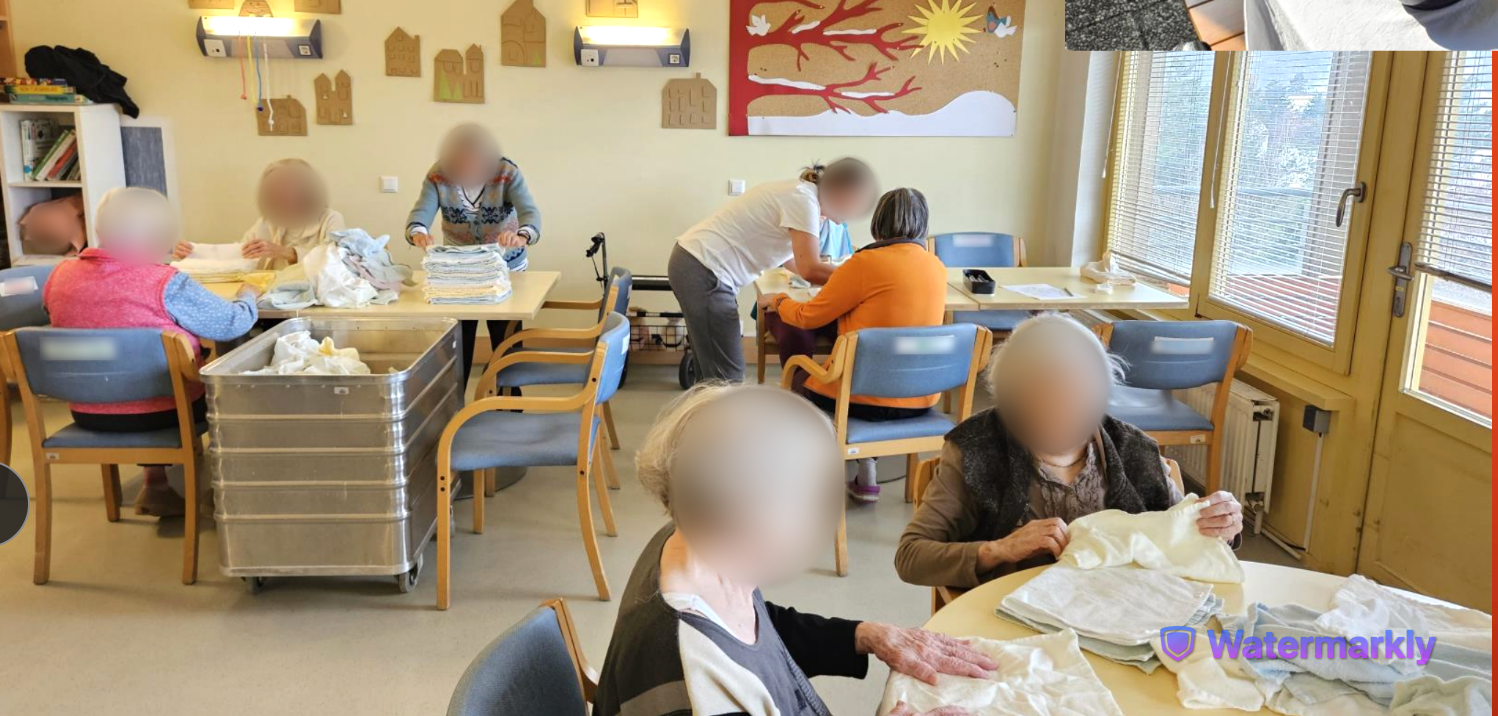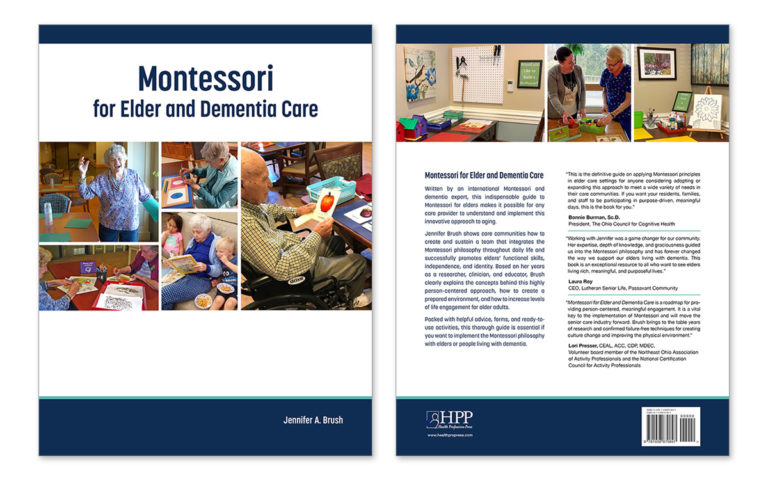Starting with Small Steps: Bringing Montessori to a Care Community in Slovenia
By Mateja Havliček Konjar
My journey with Montessori principles began almost two years ago when I attended Jennifer Brush's Montessori for Aging and Dementia introductory workshop in Ljubljana, Slovenia. Inspired by her teachings, I felt the urge to bring these principles into our community, aiming to enhance the lives of older adults. Initially, I was filled with doubts: We don’t have such a perfect open space for elderly care like Jennifer showed us. Will my colleagues even listen to me? However, Jennifer's words reassured me:
“Everything is possible, even in small spaces. Start with small steps, and your colleagues will notice the difference. Over time, they will see people becoming more satisfied, and the workers will feel less mentally and physically stressed.”
Two years later, I can confidently say her guidance has proven true. We are halfway through the journey, but the transformation is already remarkable. Once passive, sleepy, and confused, our members are now active participants with vibrant personalities, sharper focus, and a renewed sense of purpose. My colleagues have started noticing these changes, becoming increasingly curious and supportive of the Montessori approach. The fears that initially held me back have faded, replaced by a sense of fulfillment and determination.

This transformation deepened further through two case studies I conducted as part of my Montessori certification program. These experiences not only expanded my understanding of the Montessori approach, but also contributed significantly to my personal and professional growth. They taught me the vital importance of understanding our elderly residents—their backgrounds, strengths, and interests—when tailoring activities and roles that bring meaning to their lives.
For my first case study, I chose B.I., a 91-year-old man residing in the retirement home where I work. We’ve known each other for three years. B.I. is generally kind, but he sometimes exhibits unfavorable behaviors, such as collecting items he believes belong to him or throwing unwanted things out the window.
During my interview with B.I., I discovered many things I didn’t know about him—valuable insights that made meaningful engagement possible. For instance, he used to own a shop, and being useful is still very important to him. I designed an activity to reflect this aspect of his identity.
Initially, I tried having him sort small, colorful, furry balls using tweezers. While he completed the task, it was clear the activity didn’t resonate with him—it seemed too childish and lacked meaning. I asked for his feedback, and though he said he liked it, his eyes told a different story. Reflecting on his background, I remembered his time in the shop and came up with a new idea: sorting beans.
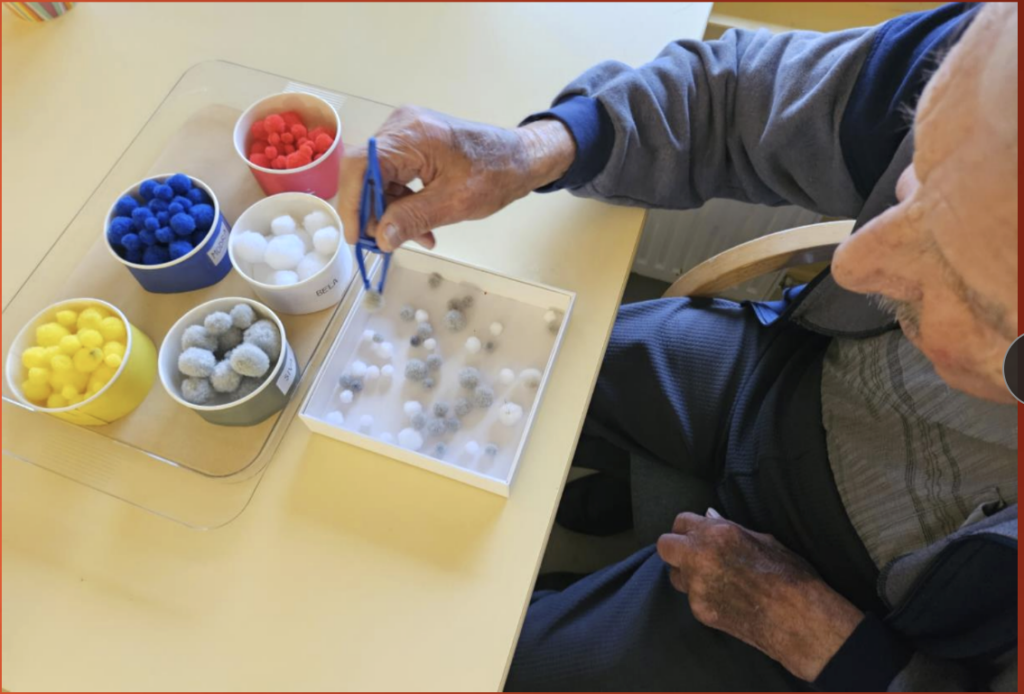
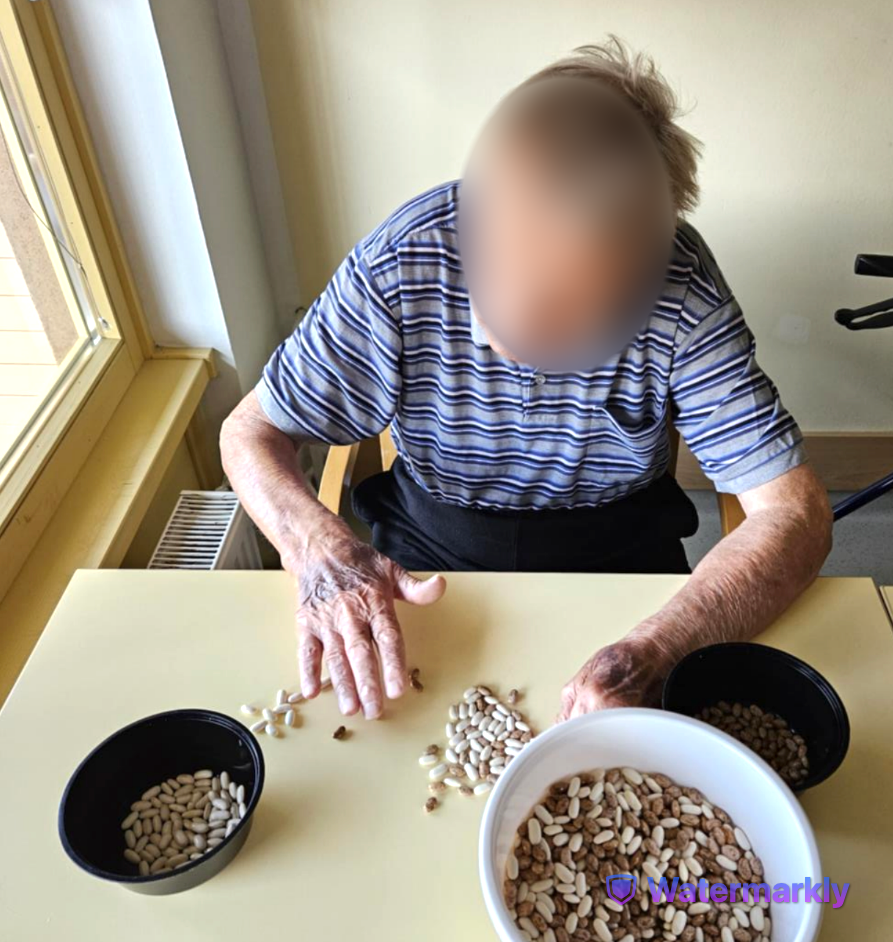
I mixed white and brown beans and asked B.I. if he could sort them for our cook. His reaction was immediate and genuine—he was excited! After completing the task, he even asked for more beans. This activity quickly became his favorite daily task. It provided cognitive stimulation, a sense of purpose, and a connection to his past.
Through this process, I learned that activities must have personal meaning to be truly fulfilling. This was reinforced when I attempted the same activity with another resident, who dismissed it with humor, saying, “You know, you can cook them together.” Not every activity is meaningful to everyone.
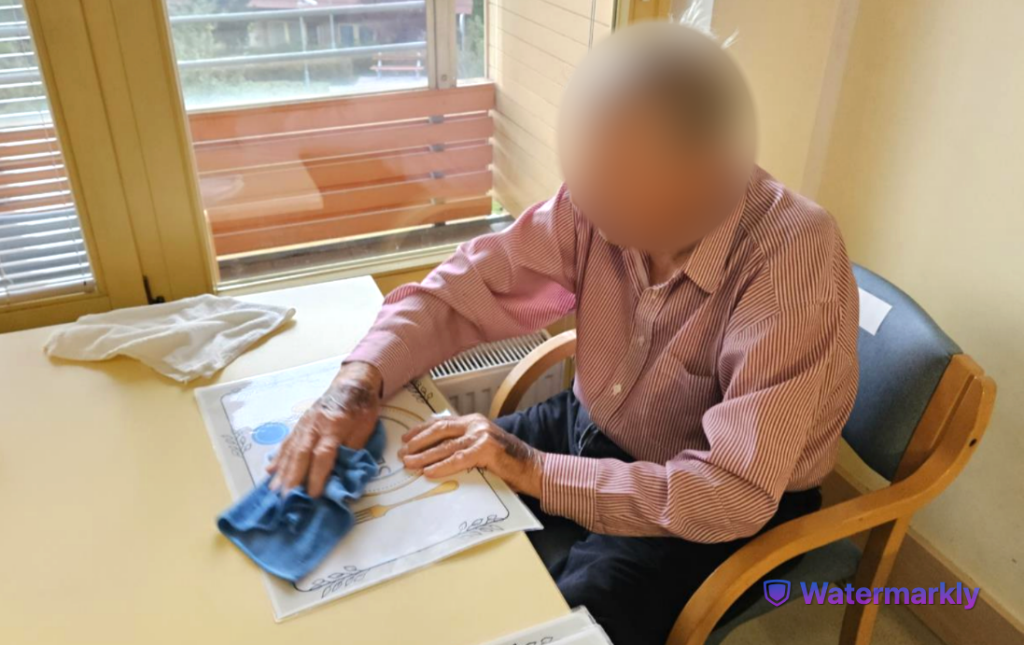
B.I. also found fulfillment in a role that arose spontaneously. I had made laminated paper placemats for our dining tables and cleaned them daily after meals. One day, B.I. offered to help. I showed him which cloth to use for wet and dry wiping. Over time, this role became part of his routine, offering him a sense of contribution while easing the staff's workload. As a result of his involvement in various meaningful activities and roles, his unfavorable behaviors diminished significantly.
For my second case study, I worked with V.B., an 88-year-old woman who is also my grandmother. V.B. lives in a retirement home and uses a wheelchair, which limits her ability to engage in many activities. She is a friendly and caring person who enjoys making others comfortable.
Knowing she loves housekeeping, I introduced her to the activity of pairing socks. She was thrilled to help, and the task provided her with cognitive stimulation and a sense of achievement. By optimizing the number and variety of socks, I ensured she could participate confidently and successfully.
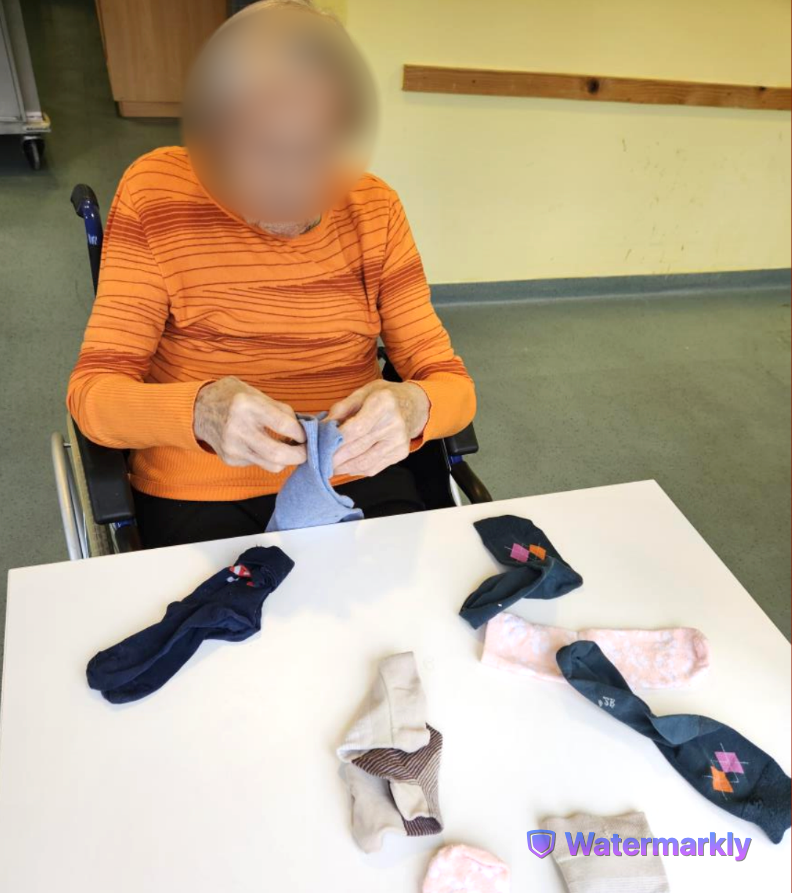
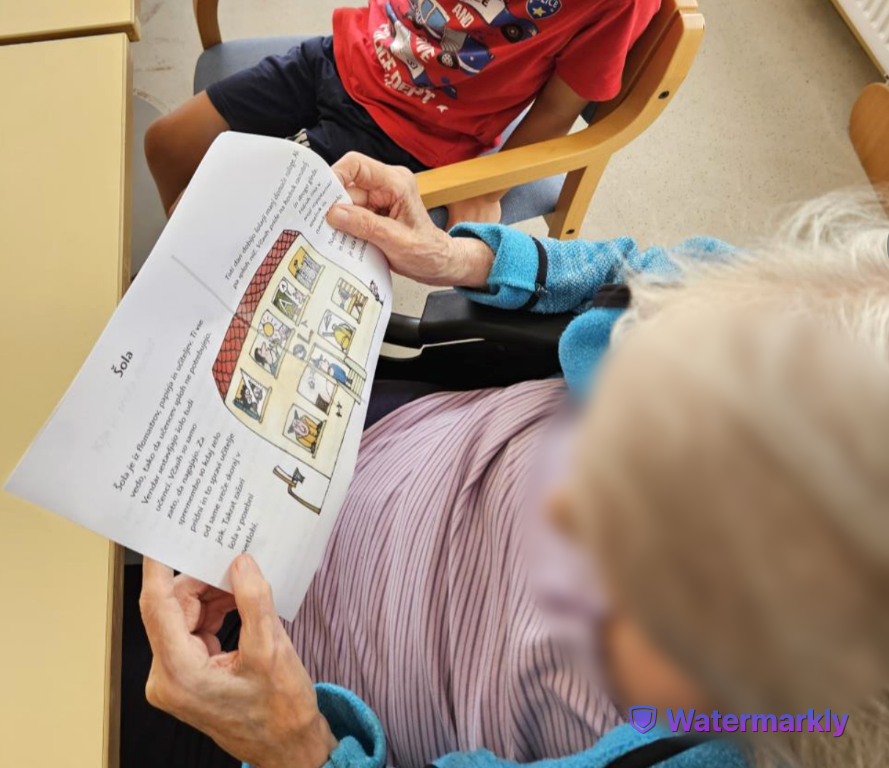
Given her love for reading aloud, I also wanted to create a reading-based activity. V.B. frequently reads signs, magazine titles, and subtitles during TV shows, and she adores to read her memory book. I attempted to form a reading circle with other residents, preparing a large-print story for the group. However, the session proved chaotic, with everyone reading over one another. Despite my efforts to manage the situation, it was clear this format wasn’t effective.
One day, during a visit with my youngest son—who loves books—I discovered a better approach. V.B. adores children and her great-grandson is no exception. Seeing her joy around my son, I brought colorful, illustrated song sheets and asked her to read to him. It was a perfect match! They laughed together after every song, creating a bond filled with warmth and happiness. My son’s visits became a special event, though they required extra effort on my part to prepare new books for them every time.
These case studies deepen my understanding of the Montessori approach and reaffirmed the importance of individualized care. I learned that meaningful engagement stems from activities that resonate with a person’s history, interests, and strengths. What worked for B.I. might not work for V.B., and vice versa.
Through these experiences, I also saw the profound impact of Montessori principles. By fostering purpose and connection, we can transform lives—not only for the elderly but also for their caregivers. Seeing B.I. and V.B. thrive through tailored activities brought me immense joy and reinforced my commitment to this approach.
Jennifer Brush’s words, “Start with small steps” have guided me throughout this journey. These case studies revealed how even simple, thoughtfully designed activities can profoundly improve the quality of life for elderly with dementia, giving them a renewed sense of purpose and joy. I feel grateful for the opportunity to apply Montessori principles in our community, and I look forward to continuing this transformative work.

